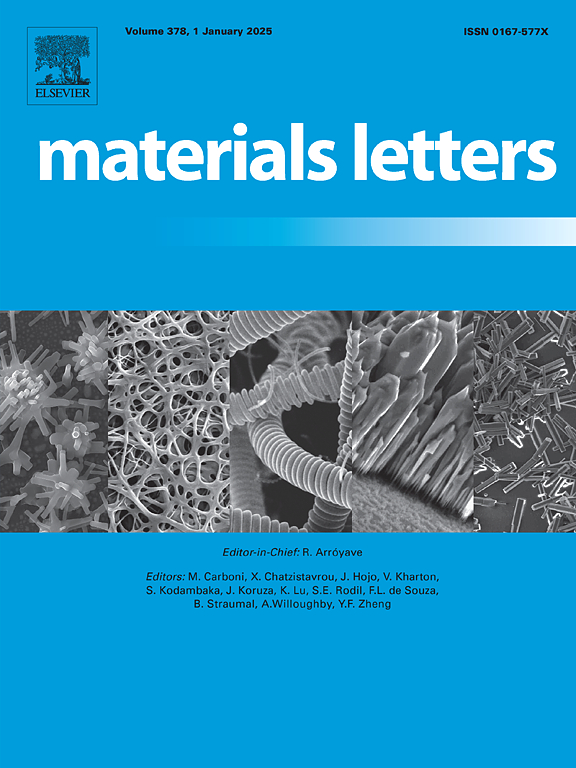CTAB-assisted hydrothermal synthesis of C@LiMn0.8Fe0.2PO4 nanospherical cathode materials
IF 2.7
4区 材料科学
Q3 MATERIALS SCIENCE, MULTIDISCIPLINARY
引用次数: 0
Abstract
Lithium manganese iron phosphate (LMFP) is increasingly attracting attention in the industry due to its excellent performance advantages. However, its limited electrical conductivity and lithium-ion diffusivity still hinder its practical application. In this paper, we introduced a method for the synthesis of LiMn0.8Fe0.2PO4/C nano spherical composites by using cetyltrimethylammonium bromide (CTAB)-assisted hydrothermal method. The material doped with 1 mmol of CTAB(LMFP/C-1) significantly prevented particle agglomeration and reduced the particle size, which improved the electrical conductivity of the material and exhibited excellent multiplicative and cycling properties. The results showed that LMFP-1can release the initial specific capacity around 152.4 mAh·g−1 at 0.1C, and the capacity retention rate was 94.35 % after 500 cycles at 1C. This research provides a method to improve the cathode materials for lithium-ion batteries.

求助全文
约1分钟内获得全文
求助全文
来源期刊

Materials Letters
工程技术-材料科学:综合
CiteScore
5.60
自引率
3.30%
发文量
1948
审稿时长
50 days
期刊介绍:
Materials Letters has an open access mirror journal Materials Letters: X, sharing the same aims and scope, editorial team, submission system and rigorous peer review.
Materials Letters is dedicated to publishing novel, cutting edge reports of broad interest to the materials community. The journal provides a forum for materials scientists and engineers, physicists, and chemists to rapidly communicate on the most important topics in the field of materials.
Contributions include, but are not limited to, a variety of topics such as:
• Materials - Metals and alloys, amorphous solids, ceramics, composites, polymers, semiconductors
• Applications - Structural, opto-electronic, magnetic, medical, MEMS, sensors, smart
• Characterization - Analytical, microscopy, scanning probes, nanoscopic, optical, electrical, magnetic, acoustic, spectroscopic, diffraction
• Novel Materials - Micro and nanostructures (nanowires, nanotubes, nanoparticles), nanocomposites, thin films, superlattices, quantum dots.
• Processing - Crystal growth, thin film processing, sol-gel processing, mechanical processing, assembly, nanocrystalline processing.
• Properties - Mechanical, magnetic, optical, electrical, ferroelectric, thermal, interfacial, transport, thermodynamic
• Synthesis - Quenching, solid state, solidification, solution synthesis, vapor deposition, high pressure, explosive
 求助内容:
求助内容: 应助结果提醒方式:
应助结果提醒方式:


